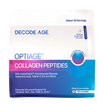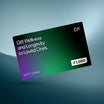Understanding and Effectively Managing Eye Flu at Home
A frequent virus known as eye flu, or viral conjunctivitis, has captivated the attention of numerous individuals in a world where eye health is crucial. This extremely contagious illness, caused by a variety of viruses, bacteria and allergens, has the potential to spread quickly through direct contact. As we embark on this informative adventure, we will examine the symptoms, underlying causes, and, most importantly, effective home-based treatment techniques for eye flu.
Eye Flu occurs when the conjunctiva – a thin, translucent layer covering the eye's white portion and the inner eyelids – becomes inflamed due to viral infections. Adenoviruses and enteroviruses are the main culprits behind this infection. Given its highly contagious nature, eye flu can transmit via direct contact with infected eye secretions or contaminated surfaces.
Conjunctivitis, or inflammation of the conjunctiva, can be caused by four different things: viruses, bacteria, allergies, and irritants. Among these triggers, the most common ocular disorders in primary care settings are acute infective causes, notably viruses and bacteria. Because of their comparable appearances, distinguishing between bacterial and viral conjunctivitis offers a problem while navigating the clinical landscape.
Depending on the cause, the following symptoms may occur:
- Viral conjunctivitis can occur alongside cold, flu, or other respiratory illness symptoms. It usually starts in one eye and spreads to the other within a few days. Eye discharge is often liquid rather than thick.
- Bacterial Conjunctivitis is usually linked with discharge (pus), which can cause eyelashes to stay together. This might happen when you have an ear infection.
- Allergic conjunctivitis usually affects both eyes. Itching, weeping, and swelling of the eyes are possible side effects. Allergy symptoms such as itchy nose, sneezing, scratchy throat, or cough may occur.
- Irritant-caused conjunctivitis can result in watery eyes and mucous discharge.
A generalized guide to recognizing symptoms is:
1. Discomfort and Irritation
A notable presence of redness envelops the eyes in the realm of eye flu, typically accompanied by persistent itching and an overall sense of irritation that can be quite irritating.
2. Unwanted Secretions
Those affected may have either a clear or slightly thicker, watery discharge. This discharge has the potential to cause crusting around the eyes, especially when you get up from a nap.
3. Puffy Eyelids
One of the most common side effects of eye flu is swelling in the eyelids and surrounding areas. This swelling causes puffiness in the eyes, which alters their normal appearance.
4. Uncovering Sensitivity
Certain people may develop a hypersensitivity to light, known as photophobia. Because of this sensitivity, exposure to intense
5. Visual Blurriness
Inflammation and discharge on the surface of the eye can cause temporary blurry or confused vision.
6. Foreign Body Sensation
Individuals suffering from eye flu frequently report feeling as if they have a foreign item in their eyes, such as sand or grit.
At-Home Treatment Strategies: Effective Home Care for Eye Flu Promotes Comfort and Speedy Recovery
While eye flu usually clears up on its own within a few weeks, using the following home-based remedies can significantly decrease discomfort and speed up the recovery process:
1. Prioritized Hygiene
Developing a habit of frequent handwashing with soap and water, as well as avoiding the urge to touch or rub the eyes, can play a critical role in reducing the risk of infection transmission.
2. Soothing Warmth
Gently laying a warm, damp cloth on closed eyelids for a brief period of time can provide relief from discomfort and aid in the gentle softening of crusty discharge.
3. Revitalising Lubrication
Enjoy the convenience of over-the-counter, preservative-free lubricating eye drops, sometimes known as fake tears. These drops can provide much-needed relief from dryness and irritation, restoring your eyes' comfort.
4. Calming Cold Compress
When faced with increased redness and swelling, a clean, cool cloth or a gel eye mask chilled in the refrigerator will perform wonders in lowering inflammation and providing soothing relief.
5. Contact Lens Caution
If you're used to wearing contact lenses, consider taking a break until all symptoms have subsided. Avoiding contact lenses for a short period of time can help prevent future inflammation, assisting in healing
6. Hydration Support
Aside from direct eye care, remember to stay hydrated by drinking plenty of water. This practice indirectly helps to keep the eyes moist while also assisting in general healing.
7. Allow Your Eyes to Rest
Give your eyes the gift of rest, especially if light sensitivity or impaired vision persists. Prioritizing rest might serve as a catalyst for hastening your recuperation.
8. Avoid Sharing Personal belongings
To reduce the risk of infection, avoid sharing personal goods such as towels, pillows, and eye makeup. This protection protects both you and others by acting as a barrier against potential virus transmission.
Uncovering the Role of Supplements in Red Eye Prevention and Eye Health
Harnessing the power of supplements can be a beneficial addition to your wellness arsenal in the pursuit of vibrant eye health and the prevention of red eyes. These nutritional supplements, when properly chosen and used as directed, can play a critical role in protecting your eyes and preserving their ideal condition. A recent study published by the National Centre for Biotechnology Information explored the neuroprotective effects of NMN in models simulating photoreceptor degeneration, which relates to conjunctivitis.
NMN Supplement- Unlocks the Door to Better Eye Health
Using the Power of NMN to Improve Eye Vitality
Nicotinamide adenine dinucleotide (NAD+) is a key coenzyme that allows electrons to move seamlessly between molecules during critical metabolic activities. Its importance extends to around 500 enzymatic processes in the human body. Our NAD+ levels gradually decline over time, making us more vulnerable to a variety of eye health disorders. While calorie restriction, exercise, and fasting give incremental benefits for maintaining or increasing NAD+ levels, the quick effects of NMN supplements set them apart. NMN acts as a precursor to NAD+, which it quickly transforms into. Elevating NAD+ levels has the ability to not only halt but also reverse aging.
NMN Improves Eye Health
The proprietary Uthever NMN from Decode Age offers a compelling route for controlling numerous age-related ocular issues. This novel supplement shows promising benefits in treating a wide spectrum of age-related eye problems. As we go deeper into the area of ocular health, the rapid potential of Uthever NMN emerges, providing a method to sustain and enhance the vitality of our eyes as we age.
Seek Expert Care: If your symptoms worsen or do not resolve within a week, or if you experience severe eye pain, decreased vision, or a significant increase in discharge, consulting a medical specialist becomes critical. If necessary, their competence can provide specific guidance and medical procedures.
Conclusion
Controlling eye flu at home entails prioritizing hygiene, applying warm and cold compresses, using lubricating eye drops, and contemplating eye health supplements. It is critical to recognize symptoms such as redness, drainage, and sensitivity. The new Uthever NMN supplement provides a novel approach to improving eye health. However, obtaining professional help for persistent or severe symptoms is critical for a full recovery.
FAQs:
Q1. What exactly is eye flu and what causes it?
A1: Eye flu, also known as viral conjunctivitis, is a highly contagious infection caused by viral infections of the conjunctiva, a thin coating covering the white area of the eye and the inner eyelids. The main viruses responsible for this disorder are adenoviruses and enteroviruses. Direct contact with infected eye fluids or contaminated surfaces allows it to spread.
Q2: How can I tell the difference between conjunctivitis types based on their symptoms?
A2: Different forms of conjunctivitis can be distinguished by their symptoms. Viral conjunctivitis is frequently associated with cold or flu symptoms, but bacterial conjunctivitis is characterized by pus-like discharge. Allergic conjunctivitis causes irritation and swelling in both eyes. Watery eyes and mucous discharge are symptoms of irritant-caused conjunctivitis.
Q3: What are some good at-home treatments for eye flu?
A3: For controlling eye flu, prioritized hygiene, warm compresses, over-the-counter lubricating eye drops, cool compresses, staying hydrated, allowing your eyes to rest, and avoiding sharing personal possessions are useful home care measures.
Q4: How can supplements aid with red eyes and eye health?
A4: Certain nutrients can aid in the maintenance of eye health and the prevention of red eyes. Vitamin A helps to maintain clean vision and a healthy cornea. Vitamin C prevents eye infections while also strengthening blood vessels. Vitamin E protects eye tissues from oxidative stress. Omega-3 fatty acids relieve dry eyes and irritation. Zinc aids in the absorption of vitamin A and protects against macular degeneration.
Q5: What exactly is NMN, and how does it benefit eye health?
A5: Nicotinamide mononucleotide (NMN) is a precursor to nicotinamide adenine dinucleotide (NAD+), an important coenzyme in many metabolic activities. NAD+ levels, which are linked to aging-related eye problems, can be raised by taking NMN supplements. Decode Uthever NMN
Q6: When should I get medical attention for eye flu?
A6: Consult a medical specialist if your symptoms worsen or do not resolve within a week if you have severe eye pain, impaired vision, or a large increase in discharge. If necessary, they can provide specific instructions and medical procedures.
Q7: How can I keep eye flu from spreading to others?
A7: To avoid the spread of eye flu, wash your hands frequently, avoid touching or rubbing your eyes, and avoid sharing personal items such as towels, pillows, and eye makeup. These safeguards operate as obstacles to viral propagation.
Q8: Can I wear contact lenses when suffering from eye flu?
A8: It is best to avoid wearing contact lenses until all symptoms of eye flu have passed. This can aid in the healing process by preventing future inflammation.
Q9: Is eye flu the same as regular flu or a cold? >
A9: Eye flu, also known as viral conjunctivitis, is distinct from the general flu or cold. While they may share certain symptoms, such as a runny nose or a sore throat, eye flu affects the eyes particularly and is characterized by redness, discharge, and irritation.
Q10: Can allergens produce flu-like symptoms in the eyes?
A10: Yes, allergens can induce flu-like symptoms in the eyes. Itching, weeping, swelling of the eyes, and the sensation of a foreign object in the eye are all symptoms of allergic conjunctivitis. It frequently affects both eyes and is associated with other allergy symptoms such as sneezing and a scratchy throat.
Q11: Is it better to use warm or cold compresses to treat ocular flu symptoms?
A11: Both warm and cold compresses can help with eye flu symptoms, although their advantages differ. Warm compresses might help soften crusty discharge and provide pain relief. Cold compresses can help to minimize swelling and redness. You can make your decision based on your individual symptoms and preferences.
Q12: Can I apply makeup or eye cosmetics when suffering from eye flu?
A12: To minimize further irritation and product contamination, avoid using makeup or eye cosmetics when suffering from eye flu symptoms. Before using these products again, wait until your symptoms have totally resolved.

















Leave a comment
All comments are moderated before being published.
This site is protected by hCaptcha and the hCaptcha Privacy Policy and Terms of Service apply.